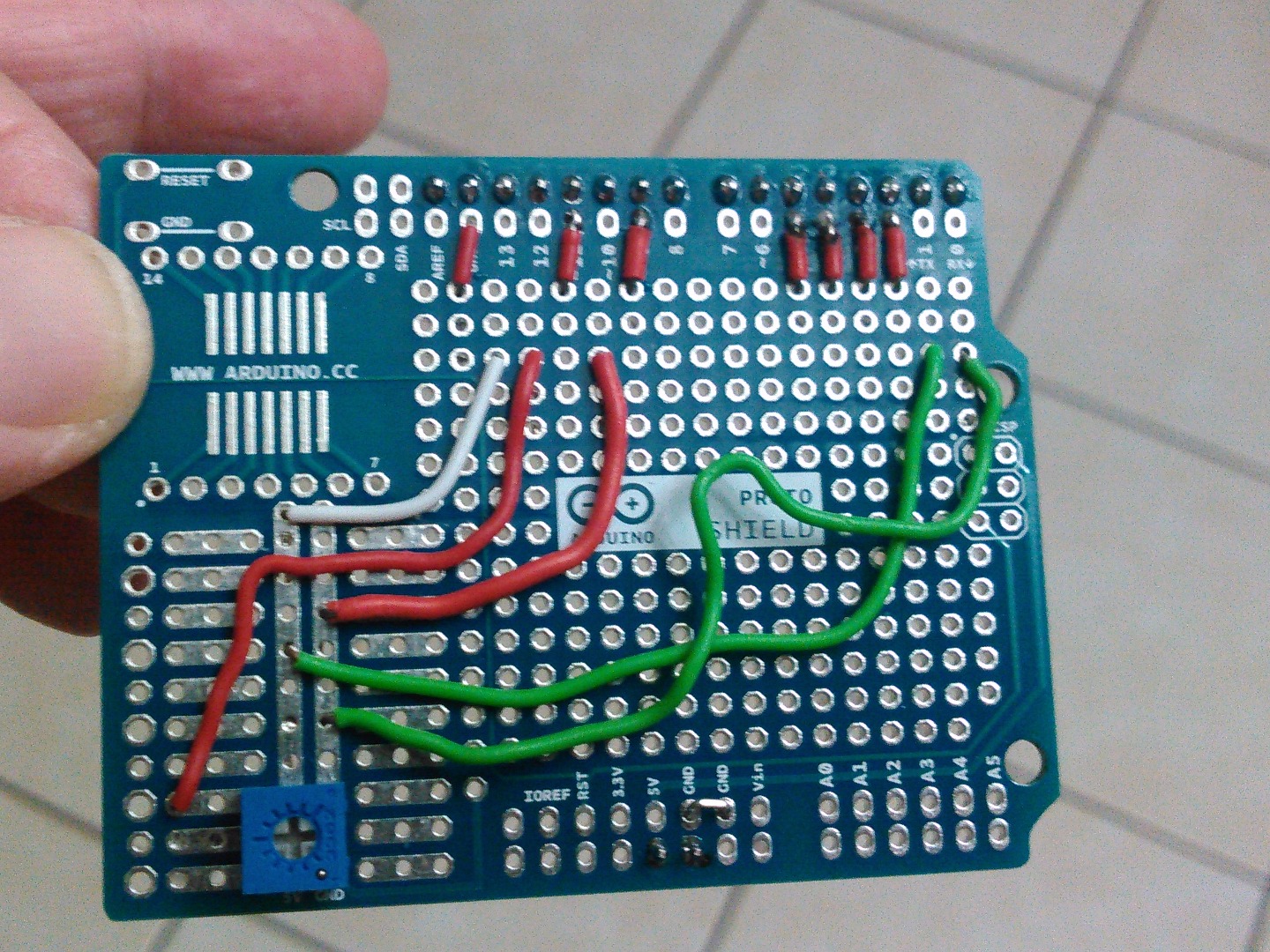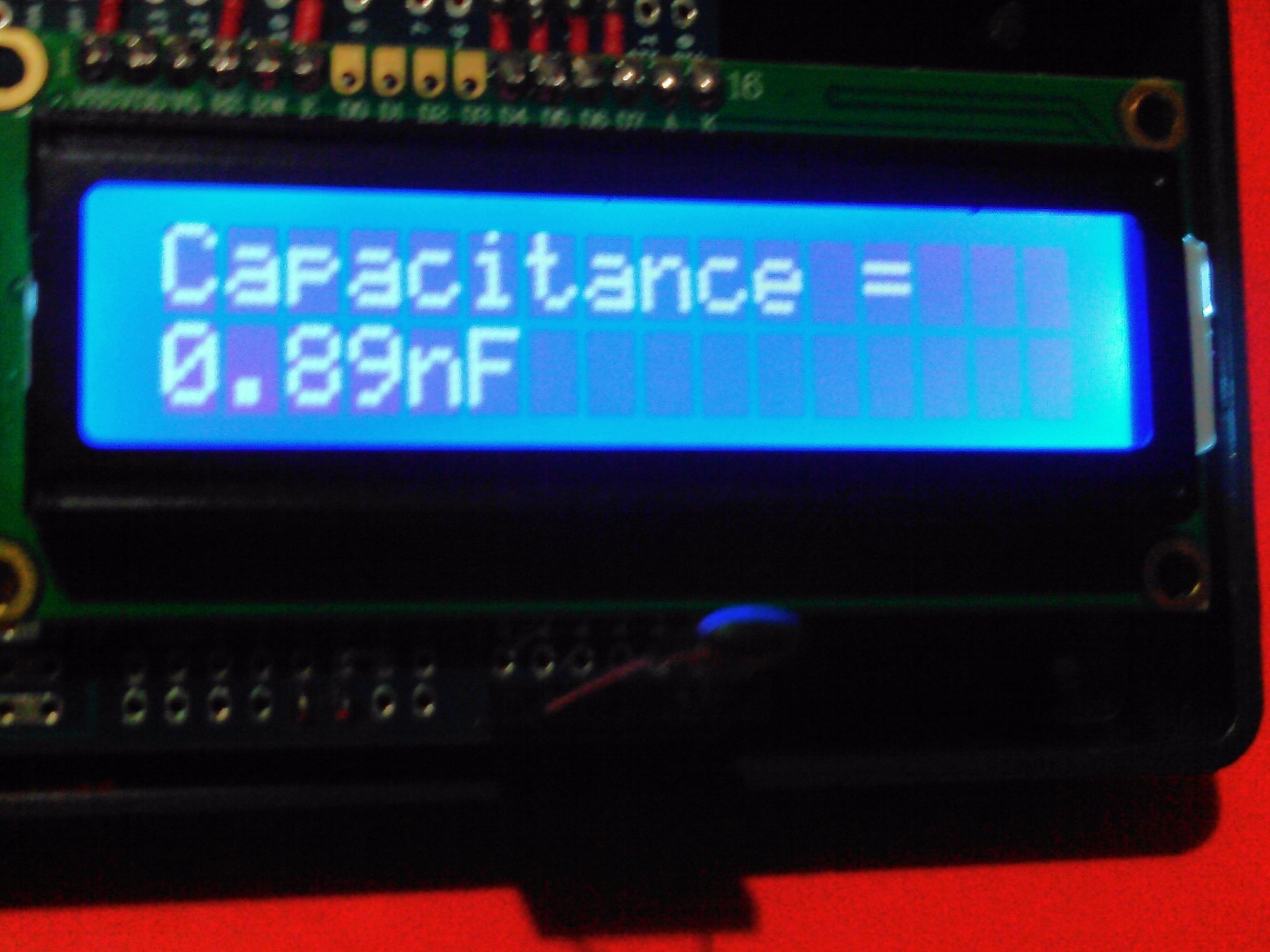Digital Capacitance Meter
by braulio777 in Circuits > Arduino
22644 Views, 125 Favorites, 0 Comments
Digital Capacitance Meter

This project lets you measure capacitors in an alone range of measure from 0.000pF to 1000uF. That is, a 16x2 LCD Display will be displaying a sole scale from 0.000pF to 1000uF whose main components will be an Arduino Uno and a 16X2 LCD Display.
List of Materials



1 16X2 PARALLEL LCD DISPLAY
1 Arduino Uno R3 DIP Edition (Revision 3)
1 Arduino Uno Proto Shield (PCB only)
1 9V Battery Snap with 2.1mm Barrel Plug
1 Cable USB2.0 A/B 3 Feet Black USB-A Male To USB-B Male
1 Connector Unshrouded Header 40 Position 2.54mm Straight Thru-Hole
1 Potentiometer 1/4" Square Cermet 1/2W 10Kohm
1 ABS Plastic Enclosure for Arduino Board - Fits UNO or MEGA
1 6 Position Female Header - Pass through Style for Arduino
Schematic Diagram

In this step, you are going to concentrate very well in what you will be constructing. That is, this step of your project is crucial since you will need to understand how to connect each component so that the whole project functions correctly. Therefore, this step becomes the main step or an imperative measure so that your project be completed successfully.
16X2 LCD Display



In this step, you can cut 2x6 pins and put them into the holes of the16x2 LCD Display in the corresponding pins: 1 to 6 & 11 to 16 so that you can have more space for working between the PCB and the Display when this last one be installed.
16X2 LCD Display 2









In this step, you are going to do the main connections to your display. Then, you should identify the connections from 16x2 LCD Display in the pins: 4, 6, 11, 12, 13, and 14 that will be connected later to Arduino Uno in the pins: 11, 9, 5, 4, 3, and 2 respectively without forgetting the connections to +5V, GND, and Pot of 10K.
16X2 LCD Display 3






In this step, you are going to match the connections done previously to your LCD Display with the future connections that you will do in the PCB: observe the photo where you can see the details closer.
PCB




Once you know how to do the connections between your 16X2 LCD Display and the PCB, you should separate them so that you can install on the PCB: the Connector Unshrouded Headers by utilizing 2X8 pins in the side of the digital pins while using 2 pins in the other side for connecting to GND and +5V.
PCB 2






In this step, you are going to connect the two GND's close to +5V so that you can have all GND's connected and so you can install the pot of 10K directly on the GND track and then you can connect it to +5V track as well while completing the connections to this component soldering the central pin to other close track.
PCB 3







Now, you can do all of connections: that is, preparing the connections and leaving enough space so that can later install the 16x2 LCD Display
Joining the PCB & the Display



It's time of matching each connection between the PCB and your LCD display so that can later solder correctly each element installed.
Joining the PCB & the Display 2





Check carefully the connections in the back side of your PCB so that you can observe if everything is OK with those connections that you did between the PCB and the LCD Display. Obviously, you are going to check the connections done to GND and +5V on the right track as well.
Completing the Project

Once completed the project, leave clear which the outputs are. That is, it's imperative to define the outputs for this project: in this case, they are A0 for the negative (-) and A4 for the positive(+).
Getting Ready for Doing Precision Measures






Before uploading the code, you should eliminate the metallic parts of the PCB's holes of A0 and A4 using a drill bit of 1/16" in order to keeping '0' (zero) capacitance when the 1x6 Position Female Header - Pass through Style for Arduino Uno be installed.
Arduino Enclosure





Take the enclosure and install the Arduino Uno cutting the plastic posts like it is showed in the photo.
Mounting the Shield on the Arduino Uno



Once installed the Arduino Uno inside the enclosure, you can mount the shield on the Arduino Uno.
Inserting the 1x6 Position Female Header - Pass Through Style for Arduino





In this step, you can insert the 1x6 Position Female Header - Pass through Style for Arduino Uno and so when you upload the code then the cursor will display 0.000pF.
Uploading the Code



Pluging the USB-A to USB-B cable between your project and the computer, upload the code at: http://pastebin.com/njjKZrfv
Next, observe the cursor where you will see 0.000pF.
Using the Project


Once uploaded the code from http://pastebin.com/njjKZrfv , unplug the USB-A to USB-B cable that is pluged between the computer and your project so that you can plug your 9V Battery Snap with 2.1mm Barrel Plug and so can also use your 9V battery to get the measure of each capacitor what you want to measure. In this case, I am measuring a 1 pF capacitor. Note that before measuring the capacitor, you can observe in the cursor: 0.000 pF.
Using the Project 2




Now measuring a capacitor of 3.3pF
Using the Project 3



Measuring 10pF
Using the Project 4



Measuring 100pF
Using the Project 5




Measuring 1nF
Using the Project 6



Measuring 10nF
Using the Project 7


Measuring 100nF
Using the Project 8





Measuring 1uF
Using the Project 9



Measuring 10uF
Using the Project 10



Measuring 100uF
Using the Project 11



Measuring 1000uF